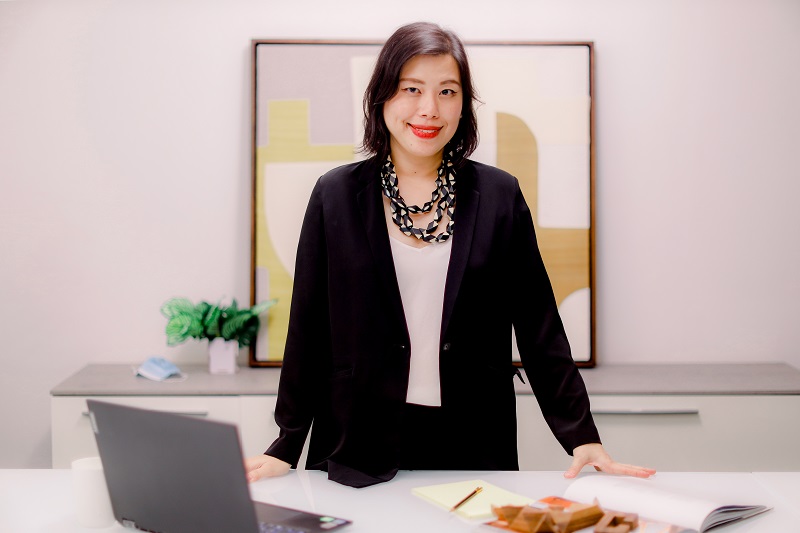“I believe that it is the architect’s job not just to look at the current needs but to also plan for the future. It is important to be open-minded, exploratory, and flexible in developing design solutions that clients might not even know they need in the future,” explains Arch. Stephanie Tan-Branquinho, Principal Architect of SpaceFabrik and Program Head for Architecture at Enderun Colleges.

Arch. Branquinho came from a family that has always been active in construction and design. As a child, she was interested in how spaces affect the behavior of people and loved to observe and see how they use them.
“Design can create environments and places for people—places that can inspire, wonder, and form happiness and good memories. Architecture and design for me are not just about use nor function. I see it as a powerful tool to create lasting change and well-being,” she shares.
With a passion for the industry, it’s no wonder how her interest in spaces led her to a rewarding profession. Her Master of Architecture degree from a German university was one of the investments she earned to land in some of the most notable projects in the world. These include the Bab Al Bahr in Morocco, Sama Dubai, and West Kowloon Train Terminal in Hong Kong., to name a few.
“I would say that every project comes at different times of my life. For every client and work completed, I get to know a bit of myself through the process of design. Each project is special and every client has unique characteristics. When I look back at a project that was completed 10 years ago, I can see my growth as a designer and as an individual. I see my maturity and growth as I understand people more—their motivations, visions, concerns, hopes, and dreams.”
“Architecture and design can help us find our best self and it is always good to be open and not let one project define us.”
“When a project can allow me to explore, learn, and work effectively with others, I can say that it is a reflection of my growth mindset in design and life.”
Now with a firm based in Manila, Arch. Branquinho strongly upholds her goal to effectively articulate her company’s vision and culture in fostering business development and sustainable growth. “With my team in SpaceFabrik, we constantly stay in touch with our clients and see how the spaces we design grow and adapt to their needs. A happy client and a successful project would be one of my professional achievements.”
The pandemic is a chance to reconsider the job of the design business in building up new sets of disciplines that will help the community. Although we know for a fact how the effect of COVID-19 has adversely distressed countless people and families, from an alternate perspective, it has turned into a chance to set things in context.
The pandemic, according to her, has highlighted the Capitalist Design System, which is a process of making money from real estate and high-density spaces that have little regard for the well-being of their occupants. Before the pandemic, offices were in full capacity, and tall buildings were designed with elevators that had people travel from floor to floor packed like sardines. The focus of the system was to make a profit on space at a per square meter rate and that stood as a major consideration in starting a project.
“Because of how the world changed with COVID-19, it made people think about their exposure to risk in these high-density spaces. They started questioning their quality of life in the workspace,” she said.
“Designers, developers, and users need to work together to find a win-win solution that everyone benefits from. We all need to look at spaces that are designed for humans. Spaces that are designed with kindness and well-being at its forefront.”
As an educator, Arch. Branquinho aims to focus on teaching her students in Enderun to think critically to be able to understand the spaces around them. Surprisingly, she is amazed at how her students want to build a better world and want to be part of that conversation with a leadership mindset. “The fact that they can make real change inspires them to learn and grow. We try to make students understand that architecture is not just about aesthetics but that our decisions as designers can affect how people live and grow.”
Her design principle is always rooted in exploration and process. She believes that inspiration comes from the desire to create a well-designed and intelligent solution that addresses the needs of the users. “Inspiration comes from the quest to achieve a well thought out intelligent solution that addresses users needs and gives room for growth and flexibility.”
In class, she encourages her students to start noticing how their environment can affect their well-being, or observing their surroundings and asking themselves how they can make it better.
“Once we open our eyes in our own homes, we can start imagining how our surroundings, community, cities, and country can change for the better. Architecture is a profession with real impact on how we live in a better world.”

